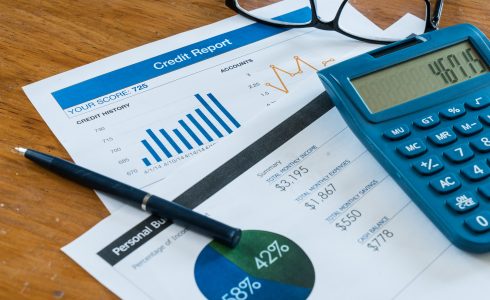
If you’re planning on buying a new home, chances are you’ll need to get a mortgage. But what exactly is a mortgage and how does it work? We have you covered. Read on to learn all the ins and outs about mortgages.
What is a mortgage?
A mortgage is a secured loan for the purpose of purchasing or refinancing real estate. Mortgages enable people to buy a home without having the full amount upfront.
Who gets a mortgage?
The majority of homebuyers rely on mortgages to purchase a home.
How mortgages work
When you get a mortgage, your lender will provide the funds you need to purchase a home. You promise to pay them back, with interest, over a set amount of time. The bank will technically own your home until you finish repaying the mortgage, so if you fail to uphold the end of the deal, they will reclaim the home.
Each month you’ll pay a set amount towards your loan. Your monthly mortgage payment is split into four main categories:
- Principal: this is the specific amount you borrowed.
- Interest: this is the rate you’re charged monthly by your lender.
- Taxes: this is your property tax. You’ll usually pay 1/12th of your annual tax bill each month.
- Insurance: lenders require homeowners to carry home insurance to protect the home against hazards like fire, theft, or accidents. Depending on how much you put down, your lender may also require you to get private mortgage insurance as well.
Don’t be discouraged if you look at your mortgage bill and don’t see the principal going down. The earlier years of your mortgage is spent paying interest. Over time, you’ll start paying more principal.
How do you qualify for a mortgage?
You must meet certain eligibility requirements to qualify for a mortgage. The specific requirements vary by lender and the loan program you’re applying for. Check with individual lenders to learn more about their requirements but here’s what you can expect:
Credit score: think of your credit score as your financial report card. It shows lenders how responsible you are with paying your debt. Lenders also use your credit score to determine the interest rate on your loan. The higher your credit score is, the better your interest rate will be, that’s why it’s important to regularly check your credit score.
Check with your lender for specific requirements.
Debt-to-income (DTI) ratio: the debt-to-income ratio is the total monthly debt payments divided by your gross (pre-tax) monthly income. Lenders use the DTI ratio to measure how much debt you’re carrying and your ability to repay them. The Consumer Financial Protection Bureau recommends having a DTI of less than 43%.
Income: your lender wants to know you have a stable and reliable income to repay the loan. They’ll check this by reviewing your paystubs, W-2s, income tax returns, or any other financial document that shows you have the income needed to make payments. They’ll also check to see how often you change jobs and how long you usually stay.
Down payment: the down payment is the amount you pay upfront; think of it as a deposit. Your final loan amount will be the remaining balance on the sales prices minus the down payment. Not all loan programs require a down payment (check with your lender for specifics) but the higher your down payment, the lower your mortgage will be.
Savings: think of these as your rainy-day funds. Lenders want to know that you’ll still be able to meet your debt obligations even if you’re going through a hard time. You can use money in your checking and savings accounts, investments, vested retirement account assets, or the cash value of insurance policies to meet this mortgage reserve requirement.
Don’t focus on how much you qualify for; focus on finding a mortgage that’s affordable for you. Sometimes you’ll qualify for more than you may be comfortable borrowing. If that happens, you don’t have to borrow the full amount.
Types of mortgages
There are two main types of mortgages: fixed-rate and adjustable-rate mortgages (ARM).
Fixed-rate mortgages have interest rates that remain the same during the life of the loan, even if interest rates change. These are the most common loan type. You’ll pay the same amount each month, which can make it easier to budget monthly. You also don’t have to worry about wild swings in the interest rates since you’ve locked in your rate from the start.
Adjustable-rate mortgages have interest rates that adjust at predetermined intervals, so your mortgage payment may increase or decreases depending on the prevailing interest rate at the time of each adjustment. ARMs usually come with a rate cap so your mortgage payment won’t spiral out of control so it’s important to ask your lender what the maximum amount you could potentially pay.
How long do I have to repay?
The length of time you have to repay a mortgage is called a term and can range between 10 and 30 years, though most people choose between a 15-year or 30-year term. Longer terms usually mean lower monthly payments since you can stretch out payments over a longer period. While shorter loan terms come with higher monthly payments, you’ll also save by paying less interest over time.
Here’s more information about the differences between 15-year and 30-year mortgages.
Keep learning about mortgages
There are several online resources available to expand your understanding of mortgages. Once you begin working with lenders, they will be able to answer your questions and help guide you to the right mortgage program for your situation.
Mortgages are a major commitment so you’ll feel more confident about what you’re signing up for once you know more about them.
When you’re ready to start your journey to your new home, visit us at DiscoveryHomes.com. to learn more about our new home communities throughout Northern California! We look forward to helping you find your home.

